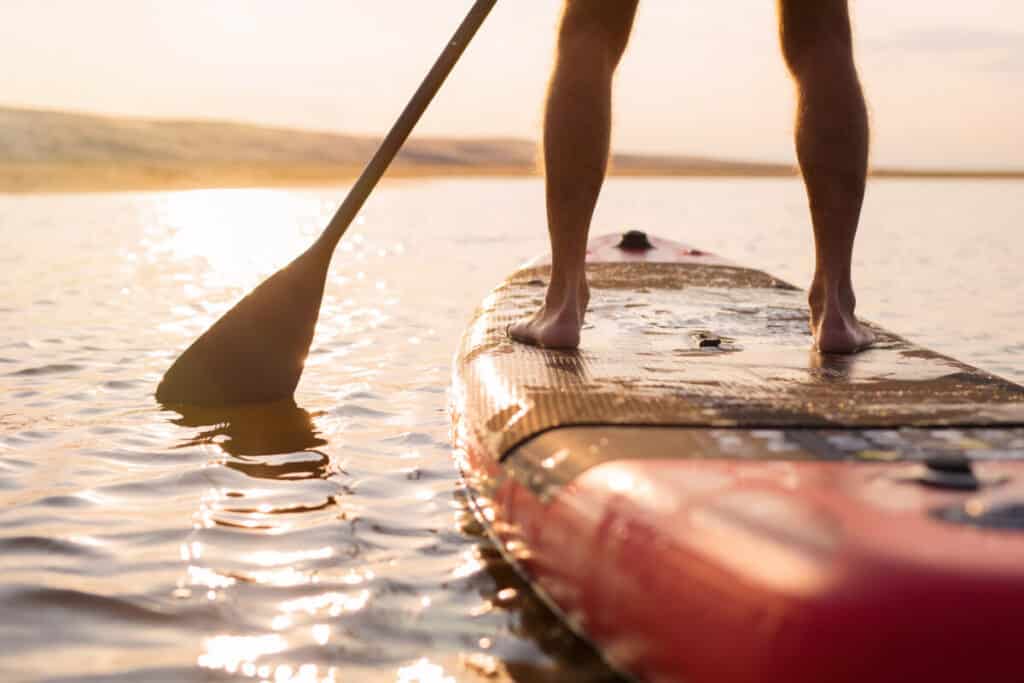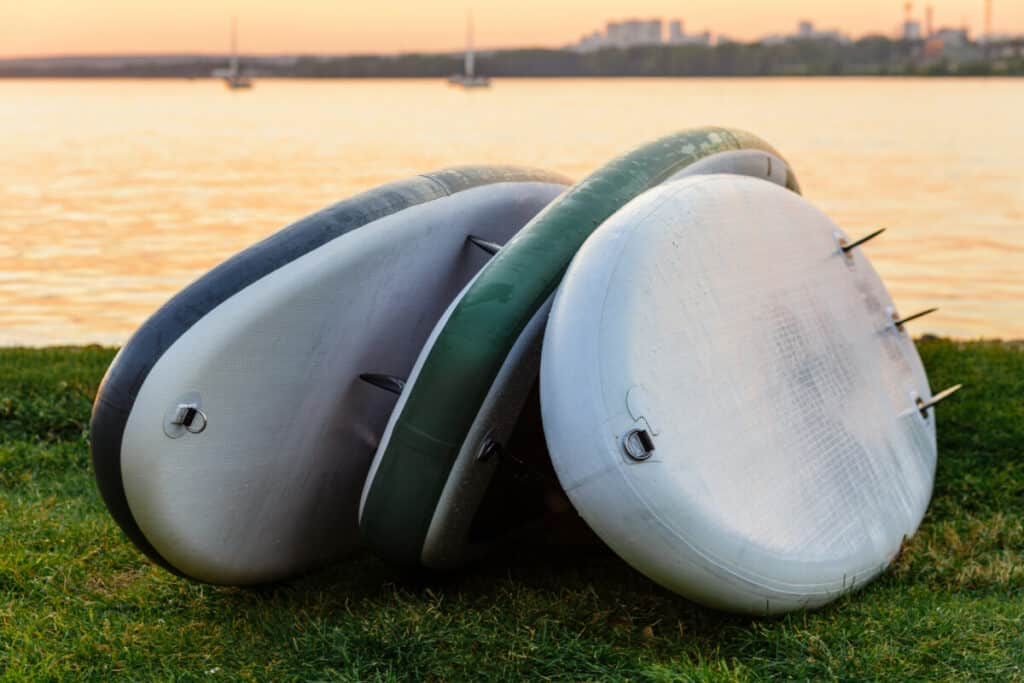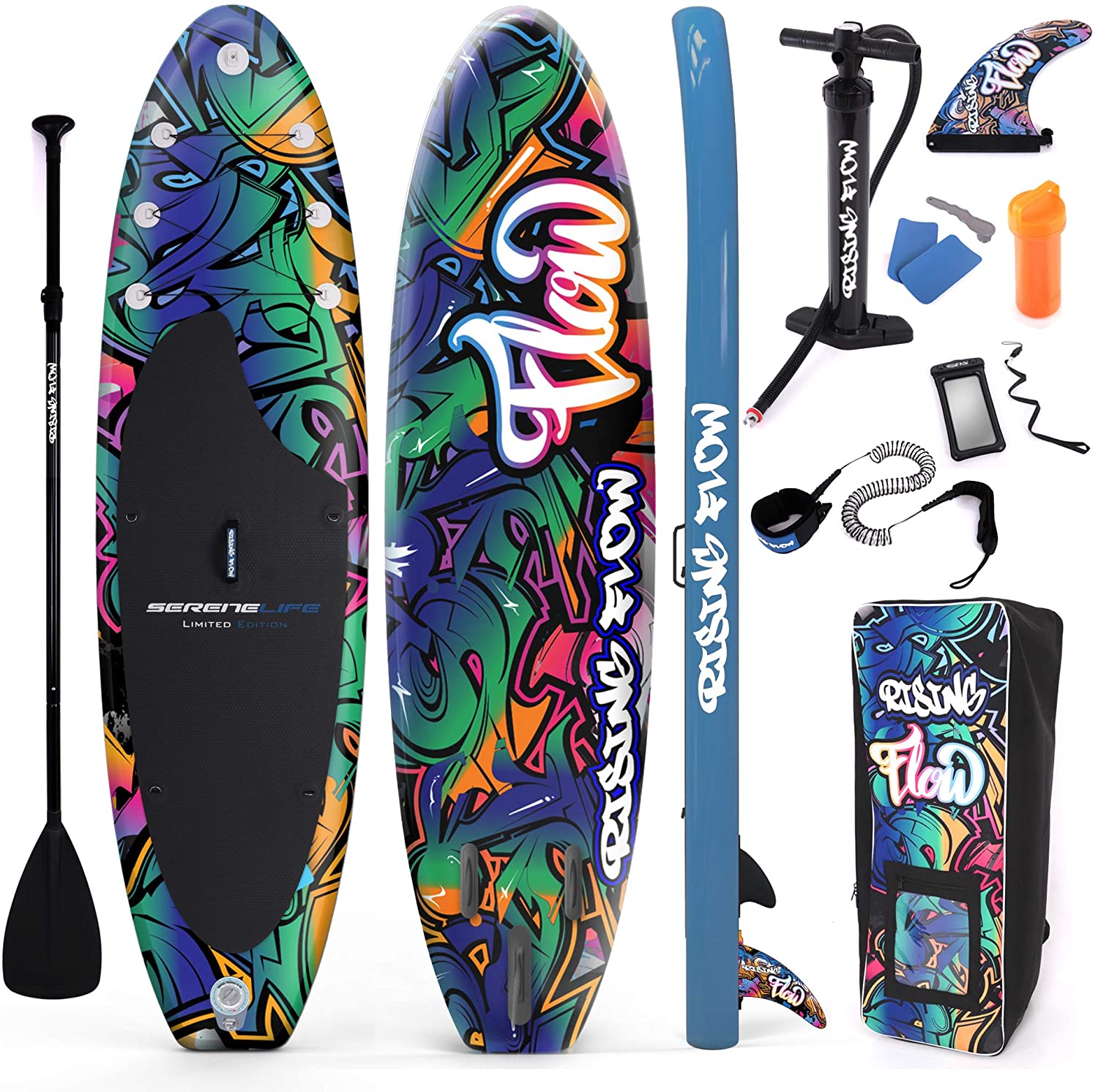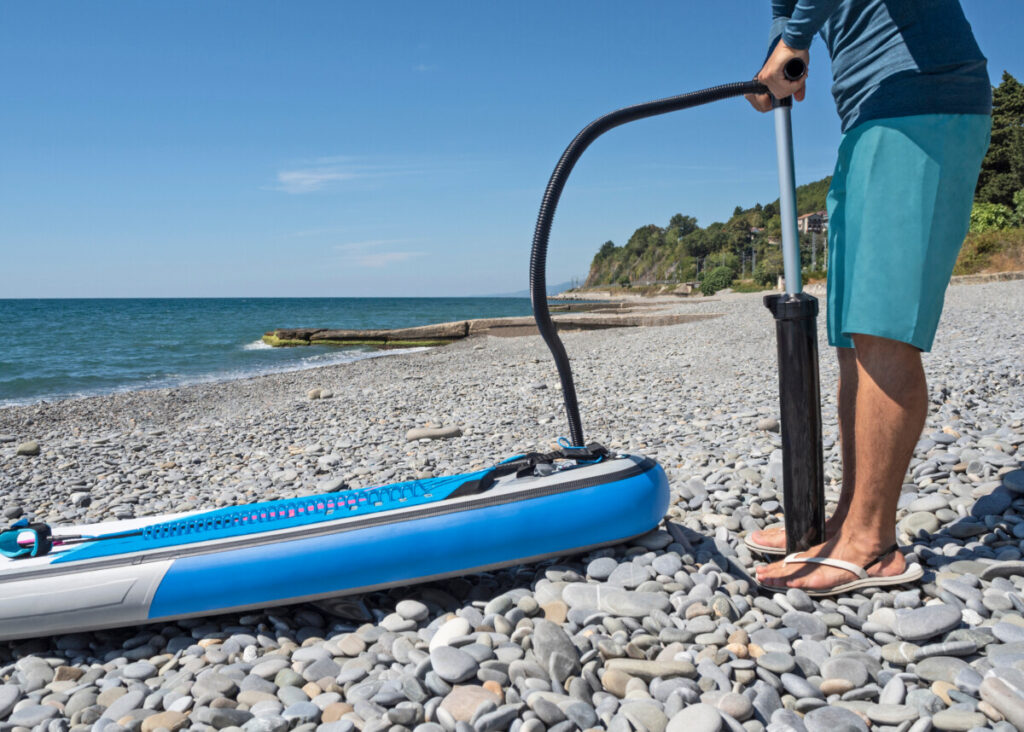Paddleboarding is a great summer activity. It can take a little getting used to due to the nature of the balancing on top of the water, but once it is accomplished, it is a fun activity that people of all ages can enjoy. But not all paddleboards are made equal, so how can you tell the best from the rest?
A good paddleboard is made from high-quality materials, is well made and therefore robust and offers the right balance between speed and stability for you. It is therefore important to choose a board type that suits the type of stand up paddleboarding you mainly want to do. The first consideration must therefore be that you are clear about what type of stand up paddling you mainly want to do.
So what do these stats mean, and what should you look out for when looking for a perfect paddle board? It will all depend on what you intend to use it for and your skill level, but let’s dive into what makes a paddleboard good overall!
Quality of Material
There are about six different materials most paddleboards are made out of including plastic, foam, wood, resin, carbon fiber, and PVC. Each one of these materials performs differently from the other and will affect your paddle board in different ways. The materials also directly affect the durability of the boards, which will be addressed under each material type.

Plastic
Plastic is inexpensive, second only to foam, and available everywhere. Plastic paddleboards are durable, but they are also heavy compared to come other materials that you can find. However, plastic paddleboards will perform well, though not as well as some more expensive materials.
Foam
Foam (typically a Expanded Polystyrene or EPS) is the least expensive material a paddleboard can be made out of. Pure EPS boards are often called “soft top” boards and are logically extremely soft. To be honest, these boards are a lot of fun to paddle due to their low weight and are better than plastic boards, for example, but they are more delicate and break much faster. Although most brands deliver good quality, these boards simply tend to break or get dents and dings. And unfortunately, these boards are difficult or impossible to repair.
Wood
Wood paddleboards are hollow and waterproofed with resin. The pure wood and complexity of their construction make them one of the most expensive types of paddleboards. They are sturdy and heavy, but if they do happen to crack or scuff, it can be hard to repair them, as the wood can rot if exposed to water directly.
Resin
This type of paddleboard is made of many different materials all sandwiched together with resin. It has a layer of foam, fiberglass, wood, and more fiberglass all held together with layers of epoxy resin. This makes the board slightly heavy, but still lighter than other materials. However, this type of board is super easy to maneuver and control, making it a great material.
Carbon Fiber
Carbon fiber paddleboards are the most expensive to make and are often only made through custom orders. The benefits of this material are that it is so lightweight but very strong. Carbon fiber paddleboards are by far the fastest boards due to their material. However, carbon fiber can be very brittle and easily damaged on its own and must be covered with something else.
PVC (iSUP)
PVC is the most common material used to produce inflatable paddle boards. Depending on how these inflatable boards are made, they can cost as little as foam or as much as a fiberglass board. They are lighter than most, except foam, and perform in the middle of the rest of the materials. What you sacrifice in performance, you make up in ease of storage, which is the whole idea behind the idea of the inflatable board.
If you need more information about the Pros and Cons of inflatable SUP Boards vs. Hardboards, check out our Buying Guide.
Stability, Balance and Shape

EEach paddleboard has different characteristics in terms of stability, speed and maneuverability. The characteristics are influenced by the material on the one hand, but above all by the shape, i.e. the form of the board. Here we present the typical shapes and explain what characteristics you can expect from these boards.
All-Around
This board is crafted to be perfect for all water conditions and beginners alike as well as for the most of the different SUP usages for some degree. It is made easy to balance on as it is commonly used with dogs and children who join you on the water as well.
In our All- Around SUP Board Overview you will find the most important details about these boards, who they are suitable for and when you should choose a different type of board.
Downwind
These boards are significantly narrower and longer, as they are primarily made for surfing the long waves near the coast. The long and narrow shape makes it ideal for paddling against and especially with these waves, but it also means that it is more difficult to balance on these boards. So you definitely need some paddling experience to really enjoy a board like this.
In our large Board Overview you can find much more information about Downwind SUP Boards, including some examples of great quality downwinder.
SUP Surf
Hit the waves with these boards!
This board has great maneuverability but it is much less stable on the water and easier to fall off of. This makes it a board that is not designed for beginners. But it is great for those wanting to try to ride some nice waves in their paddleboarding adventure.
In this article you’ll find more detailed information about what makes a Paddleboard great for surfing and what you need to consider when screening for a good Wave SUP Board.
Touring
The touring boards are optimized for longer tours and higher speeds in calmer water, e.g. on larger lakes. These boards have a great balance between stability and speed. They are therefore a great choice for everyone, including beginners. What you do need to bear in mind, compared to an all-round board, is that these boards require a little more skill in terms of paddling technique. But that’s nothing that can’t be learned easily.
Learn more about Touring SUP Boards here!
Whitewater
These boards are made for rougher water, which makes them much more stable to combat the instability of the water. They maneuver very well but are intended for more professional use instead of beginners.
However, if your preferred body of water is a river of any kind, then you should definitely have a deeper look into specialized River or Whitewater SUP Boards, as they have certain features to make them much more durable in those conditions.
Fitness and Yoga
This board is designed with your movement in mind. It is used by those who want to do yoga or some training exercises on top of the board. Obviously, this means it will be a lot more stable than other paddleboards due to the nature of its intended use. This is a wide board with great stability as well as a deck pad that makes yoga easy.
Again, we would be happy to provide you with more important information about SUP Yoga and about this board type, the so-called Yoga SUP Boards!
Other Board Types
There are of course many more types of SUP Boards, like Fishing SUP Boards, Camping SUP Boards or Windsurf SUP Convertibles, which are designed and shaped for a special usage.
Therefore, probably the most important questions to ask in order to find a good paddleboard for you is: for what kind of Paddleboarding do you intend to use the board and how experienced in SUP are you already?
A more detailed explanation on how to find the best board for oneself can be found in our SUP Buying Guide!
Speed
The different types of boards are built for different things, meaning some are built for speed and others for long distances at a slow pace. The material also affects the speed. Here are some of the fastest makes and models.
Downwind
As already mentioned, downwind boards are long and narrow and are therefore significantly faster than normal all-round boards. Downwinders are also built specifically for fast rides in long waves and therefore have significantly more rocker than other boards. The downwinders are therefore the best boards if you want to go on fast and long tours in coastal areas. But, as already mentioned, these boards need a lot more skills to be able to really ride them out.
Race
The Race Paddleboards are even faster than the downwind boards. These are extremely long and narrow, but also flatter than the downwinders and therefore optimized for fast paddling in shallow and calm water. Due to their extreme design, however, these boards are definitely only for experienced paddleboarders, as they are harder to maneuvre and provide less stability.
Long Boards
Longer boards will be faster as well. Most boards are made in three lengths, short, medium, and long, and the long category will always be the fastest board.
To conclude: Long, thin boards will give you the most speed in the water, but where they excel in speed, they suffer with stability.
Storage and Transportation
All Paddleboard are rather big and exceed in their size other boards like surfboards significantly. Typically, a Paddleboard is between 10′ and 11’6” long. Therefore: if you do not live really near to the shore, storage and transportation of the equipment is important to consider. And this is also the reason why we think that for the majority of Paddleboarders, inflatable Paddleboards are definitely the better choice.
The riding characteristics of iSUPs are still slightly less good than the corresponding hardboards, but thanks to modern materials and manufacturing technologies, they are now at a level where you can easily do without a hardboard, unless you pursue your hobby at a very high level. Surf SUPs are certainly an exception: in my opinion, there is still no way around a hardboard here.
Why?
They can be easily deflated and packed and stored in a comparably small transport bag. Just make sure that you either have a good quality double action pump in the set or to buy one additionally. By the way: there are nowadays even good and reliable electric SUP pumps, which make the inflation process definitely comfortable.


Budget and Quality
In order to call a Paddleboard “good for your needs”, it definitely has to fit into your budget.
The price range of paddleboard can be huge and ranges from about 300$ up to 2000$. However, depending on your goals and needs, there are great quality boards in the range below 500$ and even some good but cheap boards in the below 200$ area.
However, just be aware that if you are willing to spend a little more for better quality, such a board can last for several years making the investment definitely wothwhile. So if you plan to make SUP your hobby just for a summer, you can go with a cheap board, but if you got caught by the virus and intend to go on the water each summer, choose a top-quality SUP Board!
Conclusion: what makes a good Paddleboard for you!
At the beginning we asked “what makes a good Paddleboard”?
The answer is still the same: A good paddleboard is of good quality, balanced, durable, fast and fits to the needs and requirements of the user.
We hope that we could help you in helping you to find out, what your most important requirements are and with which board you could find not only a good Paddleboard, but a good Paddleboard for you!







2 thoughts on “What makes a good Paddleboard?”
I need to to thank you for this good read!! I certainly enjoyed every bit of it. I have you saved as a favorite to look at new things you postÖ
Thank you for your feedback. We appreciate it a lot!!!
Comments are closed.